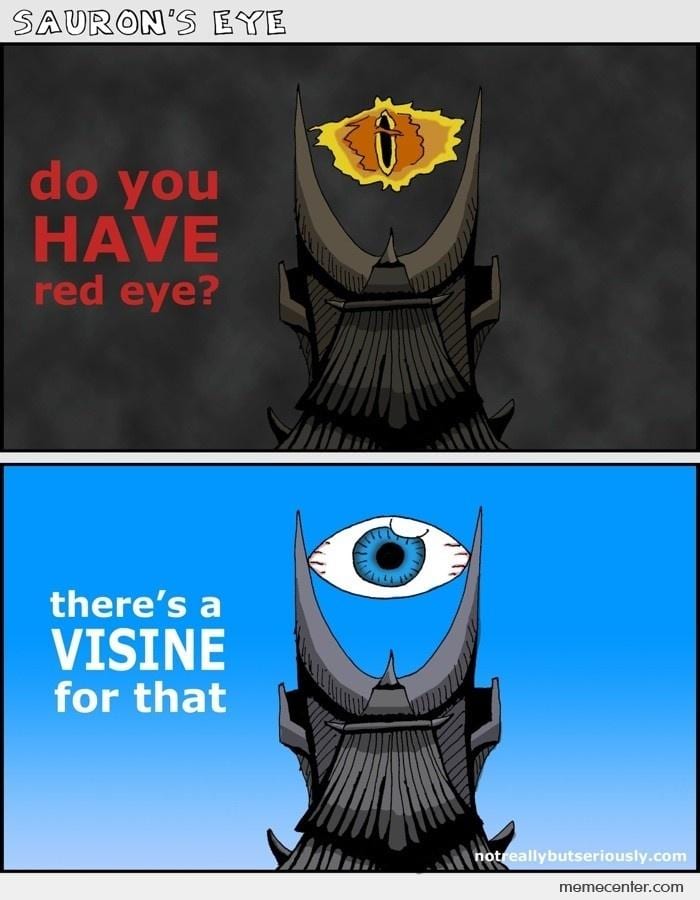Funtabulously Frivolous Friday Five 254
Just when you thought your brain could unwind on a Friday, you realise that it would rather be challenged with some good old fashioned medical trivia FFFF…introducing Funtabulously Frivolous Friday Five eye, eye themed – 254
Question 1
What is phacodonesis?
Reveal the funtabulous answer
Tremulousness or vibration of the lens with eye movement.
It is associated with a lens subluxation or a partial/complete dislocation of the lens. The patient will have a history of trauma (sometimes mild if they have had previous surgery). The lens shimmers or wobbles as the patient moves their eye.
Question 2
Being the resuscitation badass that you are you’ll be fully aware of commotio cordis causing an R on T phenomenon from a baseball, but what is commotio retinae?
Reveal the funtabulous answer
Also known as Berlin oedema, it is a common condition caused by blunt injury to the eye. Named after Dr R. Berlin who first hypothesised that the findings of the fundoscopic examination were due to the extracellular retinal edema [1873;1:42-78]
Berlin’s edema with small choroidal rupture in the RE – followed by complete resolution
It is characterized by decreased vision in the injured eye a few hours after the injury. Under examination the retina appears opaque. This greyish-whitening is indicative of cell damage, which occurs in the retinal pigment epithelium and outer segment layer of photoreceptors. Damage to the outer segment often results in photoreceptor death through uncertain mechanisms.
Commotio retinae in the inferior quadrant in LE – followed by complete resolution
The prognosis is excellent unless there has been choroidal rupture, haemorrhage or pigment epithelial damage.
- May AS et al. Commotio Retinae: A Report of 4 Consecutive Cases. IOSR Journal of Dental and Medical Sciences 2015;14(10):45-48
- Berlin R. Zur sogenannten commotio retinae. Klinische Monatsblätter für Augenheilkunde. 1873;1:42-78
Question 3
The patient above with commotio retinae from being punched in the face starts becoming bradycardic with a heart rate of 30, how do you explain this phenomenon?
Reveal the funtabulous answer
Oculocardiac reflex (OCR).
The pathway is initiated by activation of stretch receptors in the ocular tissues which propagate to the ciliary nerves and eventually to the trigeminal nerve. The trigeminal nucleus in the CNS communicates the the visceral motor nucleus of the vagus nerve and stimulates an efferent response to the SA node resulting in negative chronotropy.
OCR also known as Aschner reflex was first described in 1908 and it is defined by a decrease in heart rate greater than 20% following globe pressure or traction on the extra ocular muscles. Bradycardia is a common feature but in extreme cases patients have developed asystole.
The reflex decreases with age so is commonly seen in paediatric patients undergoing strabismus surgery.
- Dunville LM and Kramer J. Oculocardiac Reflex. PubMed 2018, April 25; PMID 29763007
Question 4
Your friendly ophthalmologist agrees to operate immediately with the above patient after you discover on CT that they have a trapdoor fracture affecting the inferior rectus muscle. They request the patient is “nil per os” What does this mean?
Reveal the funtabulous answer
The latin translation is: “nothing through the mouth”
Variations have extended to nil per oral and nil by mouth (NBM).
Question 5
Your final patient of the day in minors tripped over his guide dog. Inquiring as to why they are blind they tell you that they have “Sympathetic Ophthalmia“. Why does having a sympathetic eye make you blind?
Reveal the funtabulous answer
Sympathetic Ophthalmia (SO) is an autoimmune disease, characterised by bilateral diffuse granulomatous intra-ocular inflammation. The exact aetiology is unknown.
The inflammation occurs days to months after surgery or a penetrating eye injury. The injured eye is called the ‘excited eye’ and the other eye as the ‘sympathising eye’.
Patients present with bilateral diffuse uveitis and report an insidious onset of blurry vision, pain and photophobia in the non-injured eye.
Arguably the most famous person to suffer from this was Louis Braille. He was blinded at a very young age after he accidentally stabbed himself in the eye with his father’s awl. Braille’s father was a leather-worker and used the awl to poke holes in the leather goods he produced. 2-3 years later Braille was blind in both eyes and later developed the Braille alphabet. [Reference]
- Arevalo JF et al. Update on Sympathetic Ophthalmia. Middle East Africa J Ophthalmol. 2012;9(1):13-21 [PMID 22346110]
…and finally

FFFF
Funtabulously Frivolous Friday Five
Dr Neil Long BMBS FACEM FRCEM FRCPC. Emergency Physician at Kelowna hospital, British Columbia. Loves the misery of alpine climbing and working in austere environments (namely tertiary trauma centres). Supporter of FOAMed, lifelong education and trying to find that elusive peak performance.




Wouldnt say the etiology of sympathetic ophthalmitis is unknown. The eye (and testes) are immune sanctuary sites (“immune privileged”). Tight junctions between cells prevent immune cells from surveying antigens, and prevents an autoimmune reaction.
When a traumatic injury occurs, the tight junctions are disrupted and the site is now prone to surveillance. This leads to sensitization of the immune system to the site. This is why a testicular biopsy requires removal of the entire testes, otherwise there would be sympathetic orchitis.
One step further is why are these tissue so prone to autoimmune reaction. The rest of the body is surveilled routinely and rarely develop autoimmune reactions. This is likely because testicular cells (and I suspect ocular cells) do not express MHC1 unlike the rest of the body — a sign of mutation by infection or neoplasm — triggering a “missing self” reaction.
That is my understanding, anyhow.
Very interesting, do you have an up to date paper for aetiology of sympathetic ophthalmitis? From the limited reading I did there still seemed to be much debate. Happy to up date if there is now consensus.